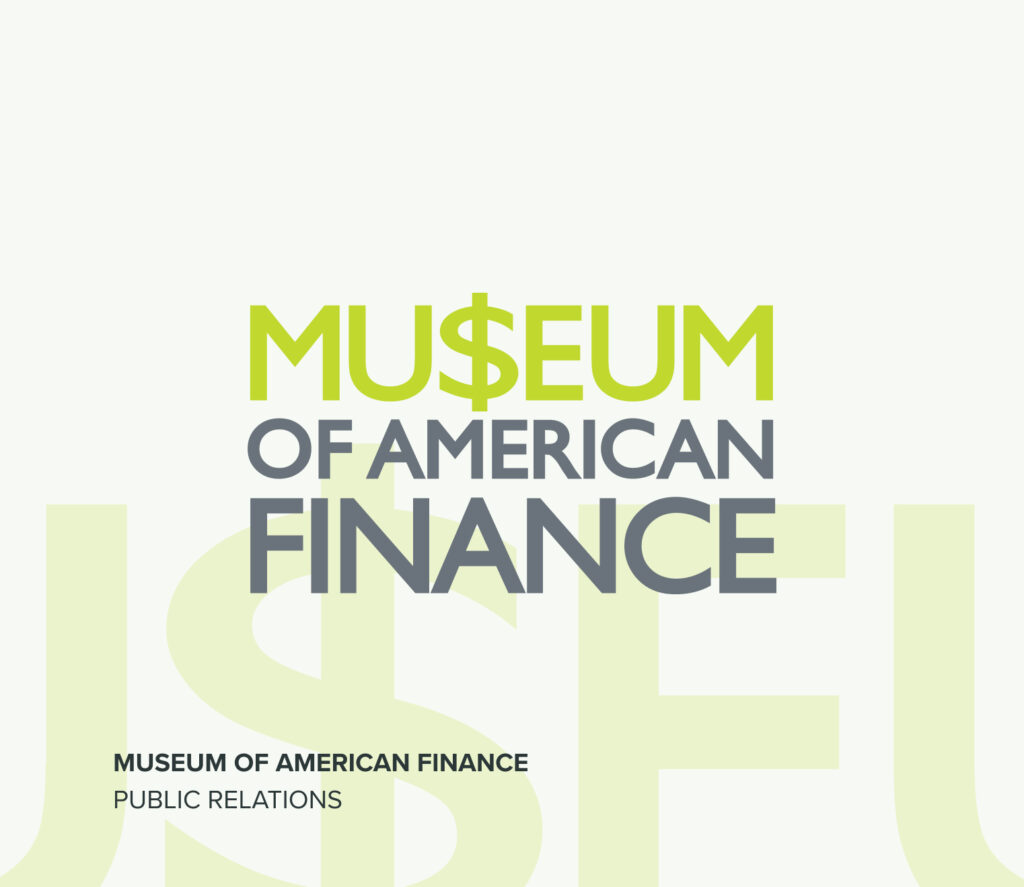The Complete Guide to Public Relations for Financial Services
As a leading global financial PR agency, Vested has led successful campaigns for some of the biggest brands in finance. In this guide, we’ll teach you everything you need to know about public relations in the financial services sector, including:
- What Is Financial PR?
- How to Build a Financial PR Strategy
- Strategies and Tactics for Financial PR
- Financial PR Tips and Best Practices
What Is Financial PR?
Financial PR is a specialized branch of public relations focused on managing the reputation and visibility of financial organizations. It involves strategic communication with stakeholders, including investors, regulators, and the public, to build trust, enhance credibility, and drive business value.
Effective financial PR includes media relations, crisis management, thought leadership, and investor communications. It helps firms navigate market perception, regulatory scrutiny, and industry trends, ensuring a strong and positive presence in the financial landscape.
Why Is PR Important in the Financial Industry?
Financial PR builds trust and credibility for finance organizations. By managing the narrative about a company and its offerings, businesses stand to benefit by attracting and retaining investors, customers, vendors, and partners.
Proactively, financial services PR helps to build an organization’s reputation by defining to stakeholders an organization’s values, goals, and offerings. PR elevates not just the products and services a business offers, but also its employees. Through raising up employees and leaders as experts in their field, PR helps stakeholders understand the quality output they can expect from an organization. Good PR creates and reinforces competitive advantage and can help build employee morale.
Public relations also serves a reactive role, in responding to special situations organizations face. Should the unexpected arise, the PR function is on the front line, responding to media, controlling the narrative, and coaching leaders, employees, and key stakeholders through public appearances and comments.
How to Build a Financial PR Strategy
Having an established strategy in place helps to guide the direction of all PR efforts. It gives all individuals involved in the PR process a unified voice and a roadmap to follow. The strategy also helps to position the organization within the market and the greater public perspective by defining key stakeholders, messages, and guiding principles.
Individual campaigns should each have their own strategies that fit within the context of the organization’s overall PR strategy as well. PR strategies can support organizational goals, one-off stories like role transitions, product and/or feature announcements, marketing campaigns, and more.
1. Define Objectives and Metrics
The first step in executing an effective PR strategy is to define the campaign’s objectives and goals, and the metrics by which success (or failure) will be measured. If your objective is “get the word out about X,” you need to think bigger. Are you trying to drive sales? Are you trying to control the narrative in a crisis? Are you trying to position your CTO as an innovative tech leader?
Once the objectives are defined, think about how you’ll measure tactical outputs. Research benchmarks for similar campaigns when possible. Set a goal for performance that is specific, measurable, attainable, and appropriate given time constraints (or lack thereof).
2. Understand the Audience
Research and know your audience. What is the intended audience’s level of education? Their familiarity with your organization? Age, race, gender? Where does this audience receive their information? For many campaigns, you’ll have multiple audiences. In these instances, it’s important to segment audiences effectively and define specific tactics tailored to each. Seek out resources instead of relying on instincts. When possible, collaborate with individuals whose perspectives may align more closely with the target audience than your own.
3. Craft a Communication Plan
Different groups are more receptive to communications in specific formats. Consider the medium, language, and tone, and how they will be perceived by a given audience.
There are a few key pieces of all communication plans that must be planned for. These are:
- Timing: When should communication be initiated? How urgent is the message? What is the total timeline for a campaign?
- Message/Positioning: What are you communicating? What are the key pieces of information you want each audience to take away?
- Medium: How many different touch points will be initiated with each audience? How does the message need to change given the channel?
- Budget: Knowing what you can afford to leverage in terms of paid partnerships, advertising, and tactical activations is key. In many cases, your budget will be the limiting factor of your campaign activation. It’s important to have a sense of cost for standard/typical activations.
4. Implement, Test, Iterate
Once tactics, timelines, and budgets are in place, it’s time to implement. Rarely do PR campaign rollouts go flawlessly. But that’s why we established benchmarks and determined key metrics earlier.
As campaign tactics reach key audiences, you and your team should be monitoring for key performance indicators. These will help determine which tactics are meeting (or exceeding) expectations, and which are lagging. From here you can choose to change gears and implement new messaging or tactics in place of those that aren’t satisfactory, and/or you can double down your investment in tactics that are moving the needle.
5. Monitor and Respond
Inevitably, the discourse around your campaign will not be yours alone to control. Outside stakeholders, the general public, and yes, internet trolls, will all likely have feedback to provide across a variety of platforms including social media, blogs, news media, and broadcast media. You must be vigilant and read, track, and manage all appropriate feedback.
When possible, reasonable, and safe, responding to specific questions and critiques can help to further engage the audience and reinforce key tenets of the campaign’s message. Keep all interactions professional and brief.
Strategies and Tactics for Financial PR
There are a wide range of tactics that can be leveraged effectively for financial PR in varying contexts. Among the most commonly practiced tactics are press releases, press conferences, and interviews. In these situations, individuals participating in campaigns have some deal of control of the narrative, and, with a longer format, are able to expound more on key details and/or talking points to communicate key messages to the audience.
These are hardly the only tactics however. Social media posts, pre-recorded messages, events, pop-ups, and high-value/educational content all can play an important role in PR campaigns, when the audience, budget, and intended message align properly. Each of these requires varying levels of resources and expertise to execute, so partnering with an established PR firm like Vested is often a helpful choice for navigating these tricky waters.
Financial PR Tips and Best Practices
Now that you’ve got some of the basics, let’s talk insider baseball: tips and best practices from some of the best in the biz (a.k.a. Team Vested).
Build Relationships with the Media
Are you more likely to do a favor for a friend that’s always been there for you, or some random PR rep you’ve never heard of? The Media – they’re just like us!
If you know there are key influential reporters who cover your beat, provide them value and build a relationship before you go to them with a big ask.
Expect a Crisis – Plan, Don’t React
If you’re just determining how to respond to a crisis after it’s occurred, you’re already off on the wrong foot.
It may seem silly to dedicate resources to “what if” situations that may never occur, but by planning for crisis and running practices/drills with key stakeholders, you’ll be better prepared when the day comes. And it will come for every organization.
Don’t Test the Limits of Regulators
Particularly when it comes to finance, there are very strict rules and regulations around what can be said, by whom, about what, when. Know the rules. Retain legal support to enforce those rules and ensure compliance.
Tell a Story
The wild world of finance may be exciting for those of us who live and breathe it, but to many audiences, it can be a bit boring. Crafting compelling stories can help your message spread more organically and engage with audiences at every level.
Successful Examples of Financial PR Campaigns
Pagaya
Vested prioritized elevating Pagaya’s executive team as industry leaders through high-impact awards, strategic thought leadership, and media engagement. By focusing on quality over quantity, we secured prestigious accolades like EY Entrepreneur of the Year and American Banker’s Most Influential Women in Fintech, alongside recognitions from CNBC, Women in Fintech, and GlobalCapital.
A robust PR and social media campaign amplified these wins, driving a 25% increase in share of voice, 300+ media mentions in Q1, and sustained momentum throughout the year with 22 executive engagements, five additional awards, and a growing digital presence that reinforced Pagaya’s leadership in fintech.
HSBC
HSBC partnered with Vested to launch a global payments campaign that balanced international positioning with local adaptability. Addressing post-pandemic financial challenges, Vested crafted a human-centric, data-driven strategy that engaged entrepreneurs, academics, and industry leaders to connect with MME C-suite executives.
The campaign spanned 14 key regions, leveraging influencer partnerships and multimedia content to amplify HSBC’s role as a strategic business partner. With a Bloomberg-exclusive launch, media coverage in 50+ publications, and over seven million impressions, the campaign successfully reinforced HSBC’s global and local impact.
When in Doubt, Seek Us Out
Financial PR is a space rife with opportunity and engaging challenges. While it’s important to have the organizational know-how, it’s often prudent to partner with a firm that has a deep bench of experts who are knowledgeable in finance and banking sectors. Whether it’s for day-to-day support, campaign promotion, executive communications coaching, or crisis response, Vested has the resources and knowledge necessary to help your PR strategy shine.


